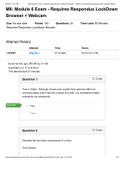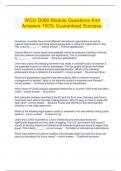Samenvatting
Summary ALLE Tentamenstof Sociology of Organisations - bruikbaar voor open boek toets
- Vak
- Instelling
- Boek
Een stukje overzichtelijker en makkelijker om uit te printen dan de andere samenvattingen die ik voor dit vak heb gezien lol
[Meer zien]













